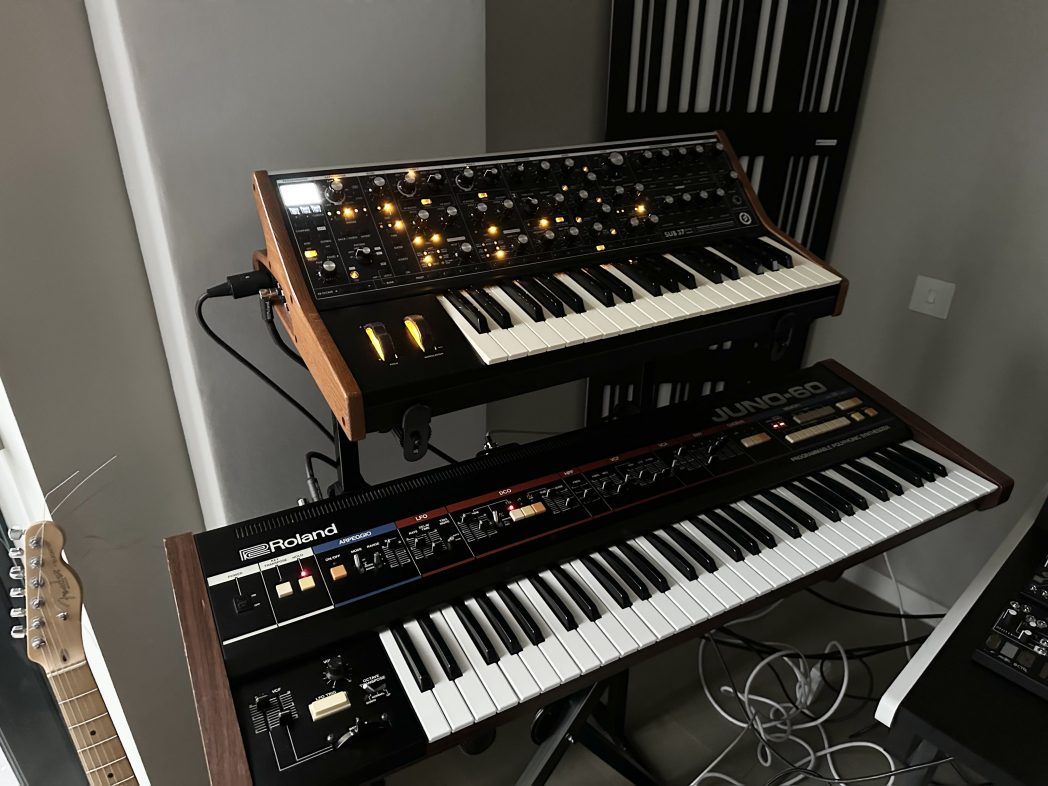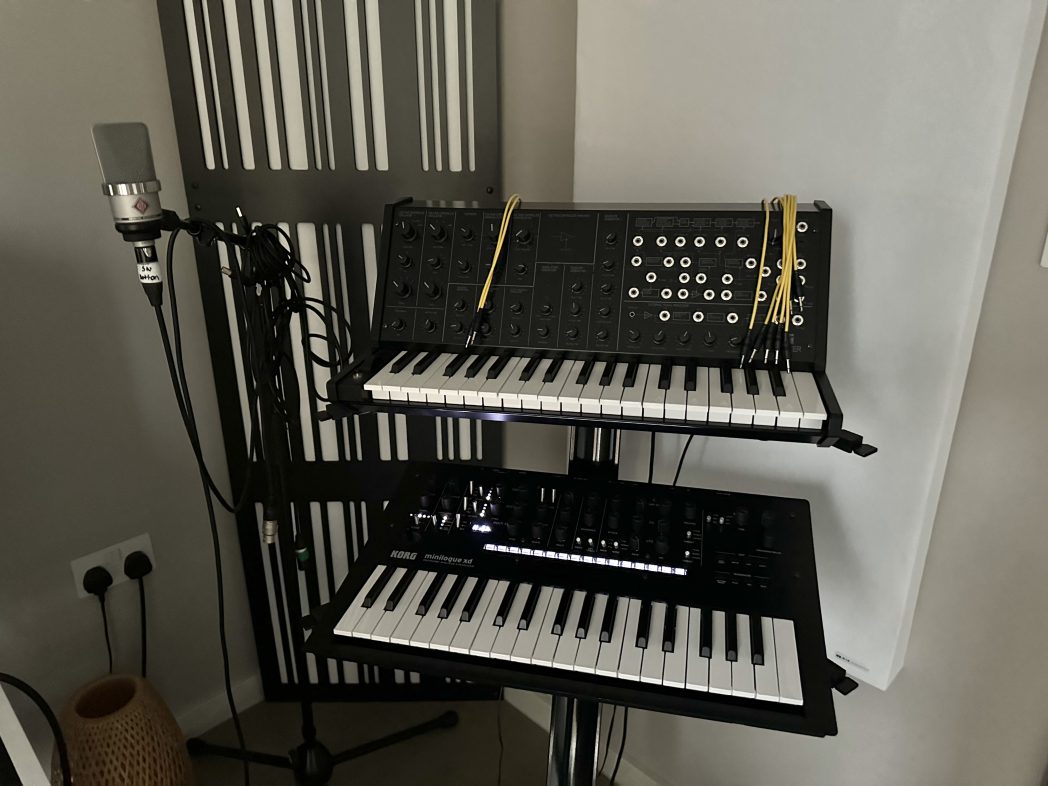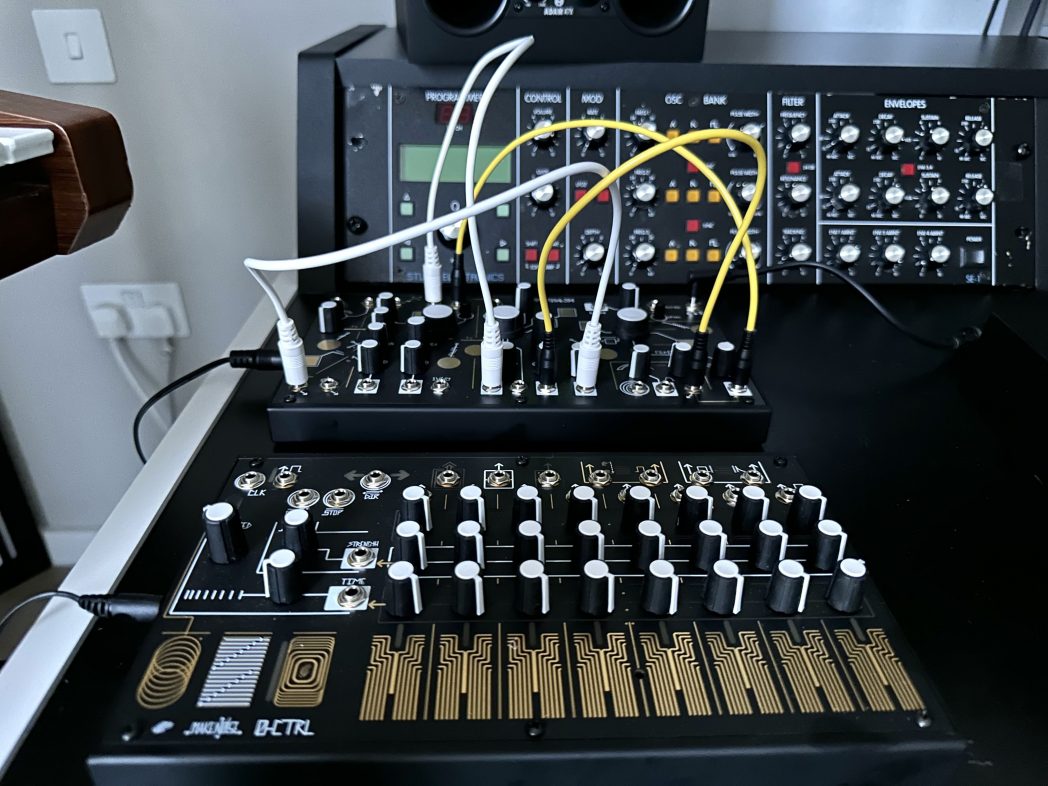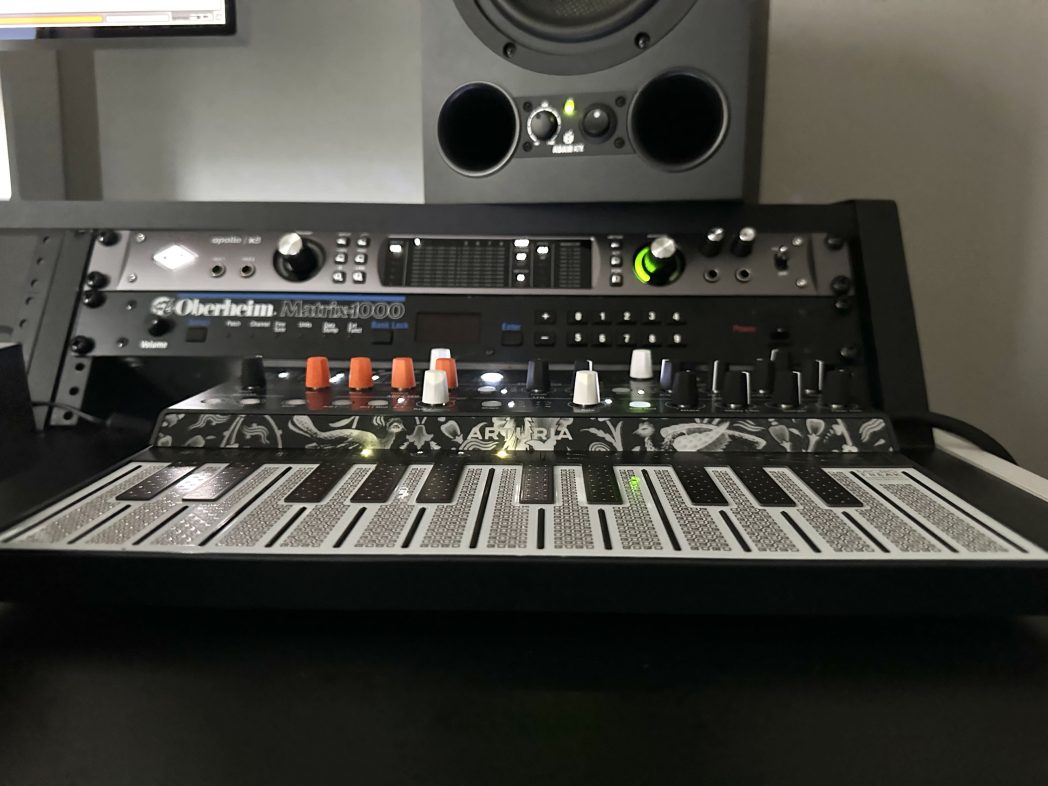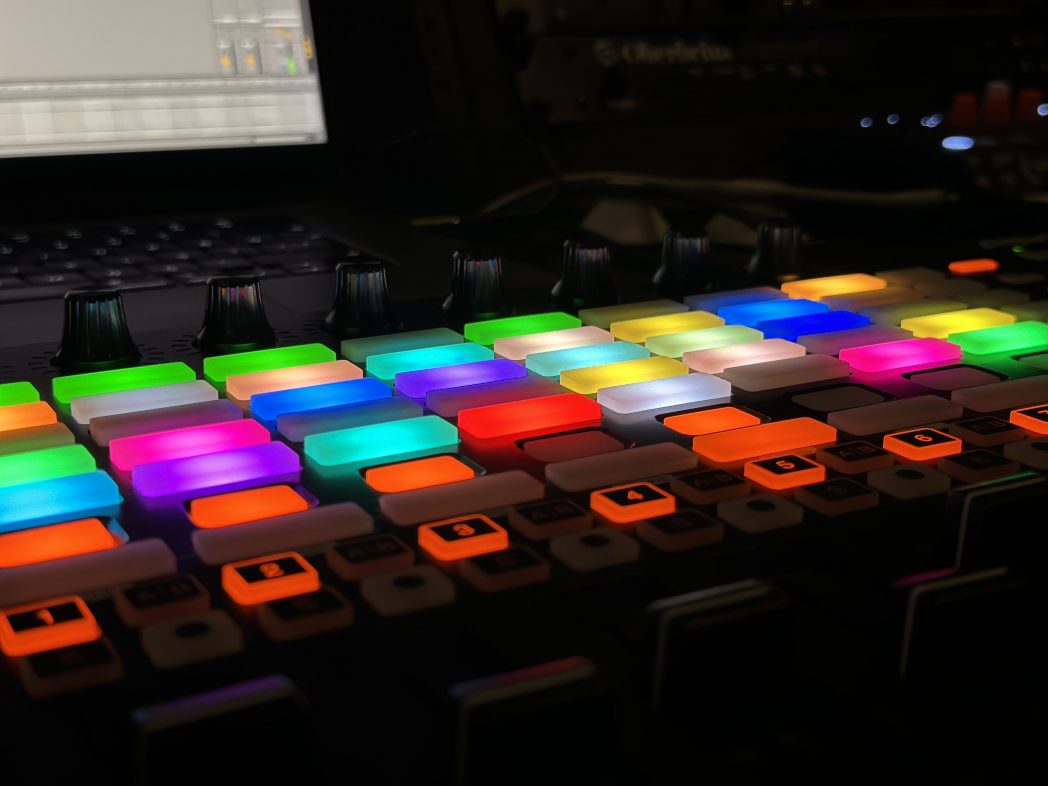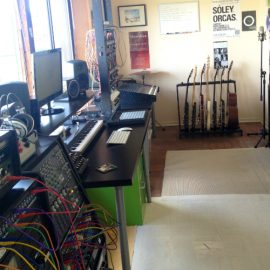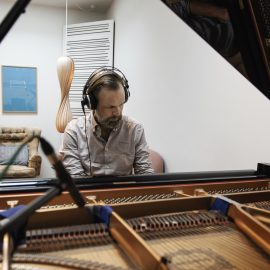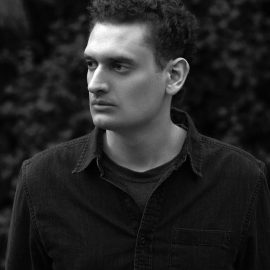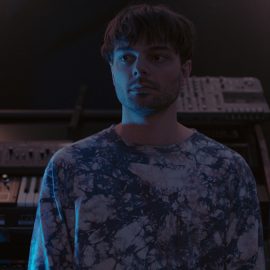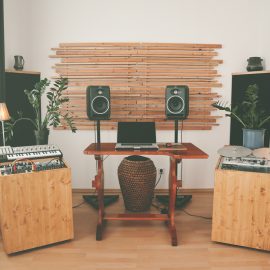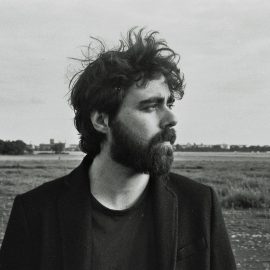– Let’s start at the very beginning. Can you tell us how you got involved in composing, and what was your very first piece of gear?
I think I was born in love with the piano. I really wanted to learn how to play at a very young age, so my parents got me a keyboard when I was six. That would be my first piece of gear. It was not the instrument I was hoping for, although I did end up spending a lot of time with it.
How many different studio iterations have you gone through, and what does your final setup look like right now?
A few. The most curious one was with my studio monitors. I have used Focal Twin6 Be’s for years in different settings with great efficiency. However, I moved to a new flat two years ago and they sounded quite bad in there, so I switched to Adam Audio A7X’s, a lesser product which fit the acoustics of the room better. I currently have a Moog Sub37 which I guess is a studio staple, a Roland Juno 60 on loan from a friend, an Oberheim, a Korg Minilogue DX and an MS-20 mini, an Arturia Micro Freak, a NI Komplete midi keyboard, Akai APC40 for getting ready for live sets, Make Noise’s semi-modular synth Strega and 0-CTRL, a Neumann TLM 102 mic, a UA Apollo X8 audio interface and a Fender telecaster that I never use.
Tell us about your favourite piece of hardware.
I think my Sub 37 that I bought from a friend, who regretted his decision to sell it later on! I use it in every track and not just for the bass.
And what about the software that you use for production?
Ableton Live 11 Suite.
Is there a particular piece of gear that you’re just dying to get your hands on and do you think one day you’ll have it?
I had great fun last year playing with a vintage analogue modular synth, a Roland System 100m in one of the studios at Guildhall, which also features in Gazel. It’d be great to have it in my studio.
Can you please share some aspects of sound design in your work?
I really enjoy working with organic sources of audio. I don’t get as excited about starting my session on a synth building a sound from scratch as much as finding or recording sounds, which I then start heavily processing in unusual ways to find something interesting that I like. It can be via using a granulator, a sampler, an arpeggiator, granular echo synthesizers and creative plug-ins, time stretching or creative warping. I can record things on my Tascam, go to freesound or do a proper recording session. For my track On the Line, we did a remote recording during the pandemic with cellist Fraser Bowles and I created all the pads, the textures as well as bass and synth sounds in that track from his cello to keep a coherent sound world. That being said, I heavily used analogue gear in my productions too, particularly in the upcoming releases that are not out yet so it’s not all found sounds and samples.
Any particular new techniques that you tried out for your new album?
I put a lot of sounds in Ableton’s Granulator. I used it on so many songs in creative ways to produce tracks that don’t even sound granulated.
What does your live setup look like, and what do you bring with you when you travel for an extensive tour?
My setup is pretty simple. I have my Sub 37, my laptop, my controller APC40, my sound card and an effects mixer. I am now joined by Jan Hendrickse on ney though, which should offer a more engaging experience hopefully.
What is the most important environmental aspect of your current workspace and what would be a particular element that you would improve on?
The room I work in was really boomy and hollow when I first got in. Thankfully, the GIK acoustic panels and bass traps took care of that. Unfortunately, I live on a very busy road (which I was told was in the process of being pedestrianized before moving in – never trust an estate agent!). It’s very noisy in there and not fit for doing acoustic recordings so I recently had to invest in very thick secondary window glazing, which I am hoping will help with that.
What can you tell us about your overall process of composition? How are the ideas born, where do they mature, and when do they finally see the light?
Until now, things generally started with sampling a section of another recording that inspired me, even if it’s for a couple of seconds that I loop afterwards. I listen to a song, and I get instantly blown away by an element or a section of the song and I can’t help myself but chop it off and create a whole new track around it. Usually, the original recording is barely recognizable, and the melody completely changed, but sometimes it’s there in all its glory, surrounded by my production. The downside is it takes ages to clear them afterwards. I never know when to decide they should see the light of day but booking dates with very busy engineers helps in letting go of the tracks.
After the piece is complete, how do you audition the results? What are your reactions to hearing your music in a different context, setting, or a sound system?
Hearing the tracks in various sound systems helps loads in finalizing not just the mixing but also production decisions. I listen to my tracks in several setups, including my phone and my car stereo to see how they would sound in different systems, good or bad. It’s always great to hear them in venues, as it provides a great learning opportunity and in a spatial setup, like the studio of brilliant Air engineer Tom Bailey who played back the Atmos mixes he worked on for Dua.
Do you ever procrastinate? If so, what do you usually find yourself doing during those times?
Definitely more than I’d like! I usually find myself by the fridge or turning on Netflix.
What gets you inspired?
Seeing other musicians’ live sets, DJ mixes, traditional sounds from Turkey and the Middle East, vintage synths…I also find reading about the creative process of other artists very interesting.
And finally, what are your thoughts on the state of “electronic music” today?
I have a lot of people around me who believe electronic music has hit a rut where everything sounds the same. I respectfully disagree. I keep coming across so many artists that are pushing boundaries in innovative ways while carving out their signature sounds or coming up with new technologies even. The state of the music industry is a different discussion though.

